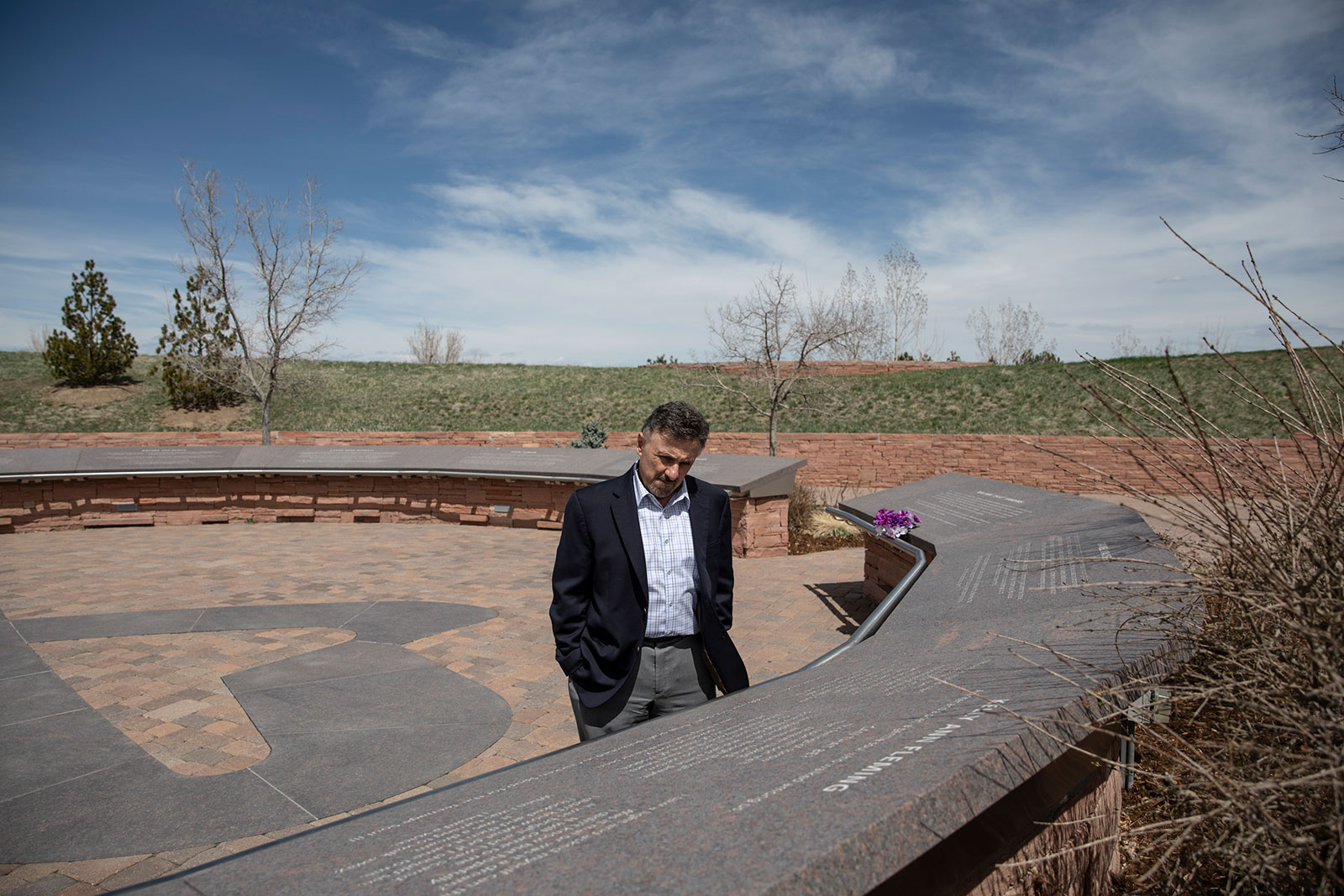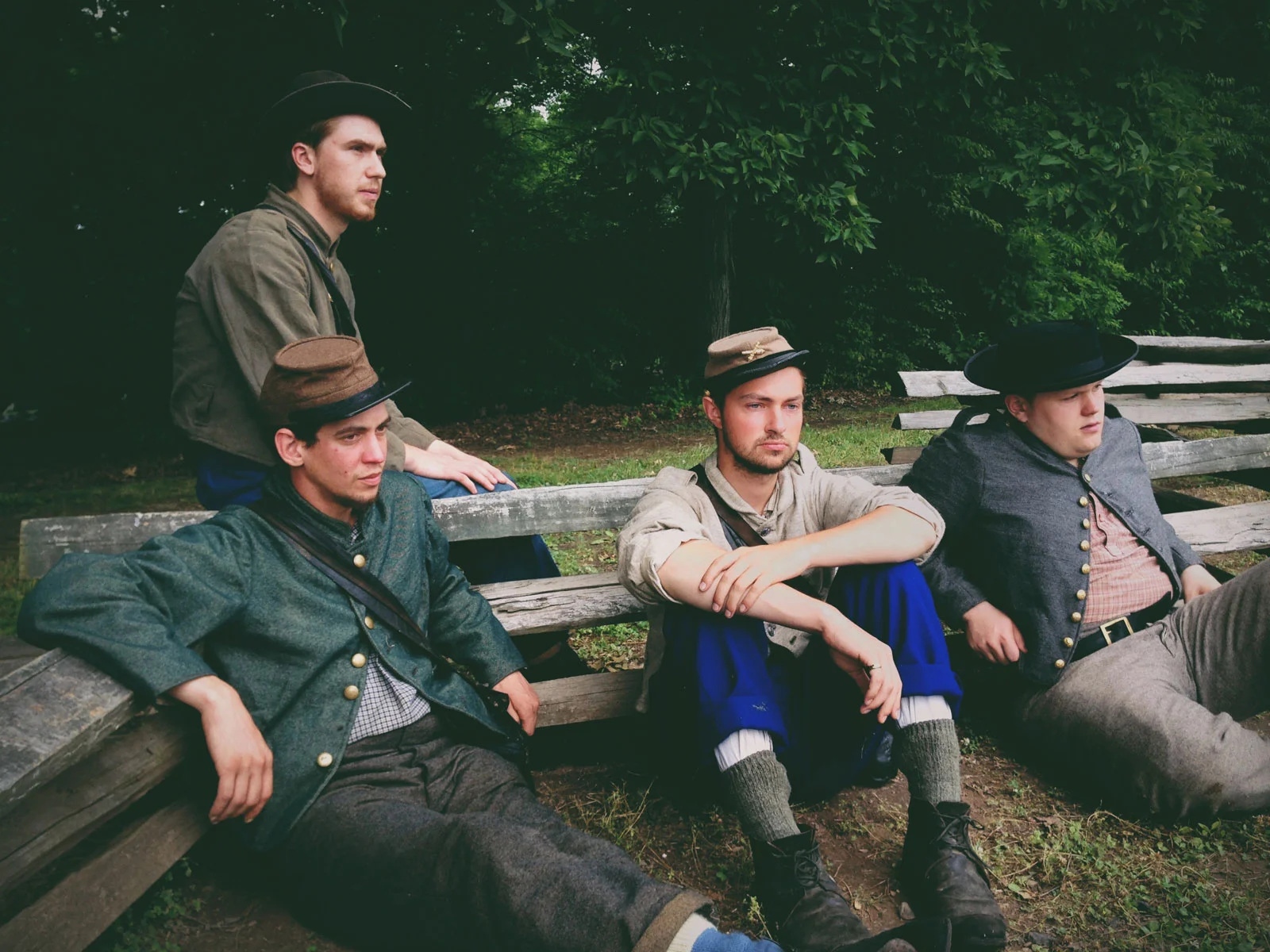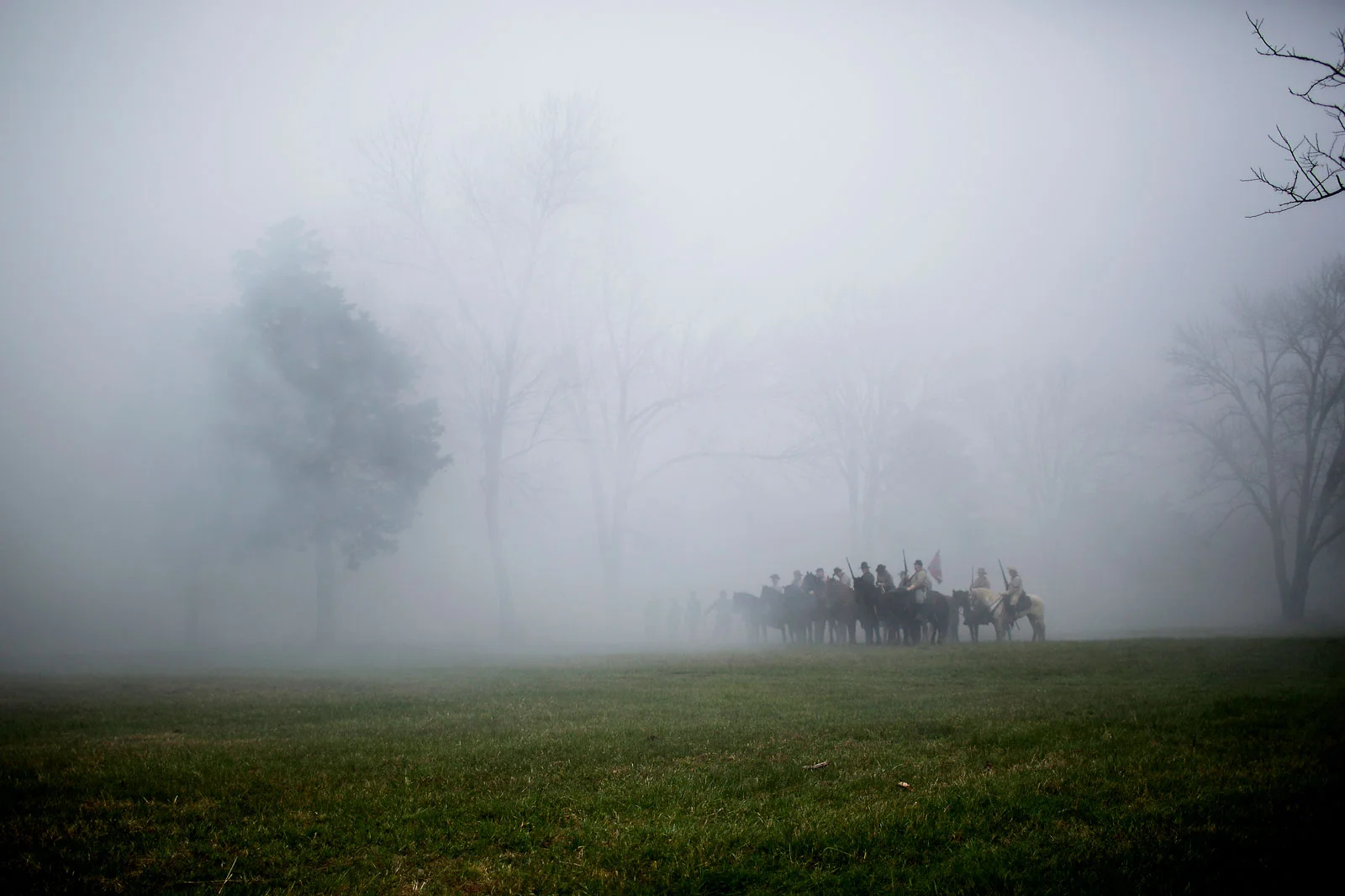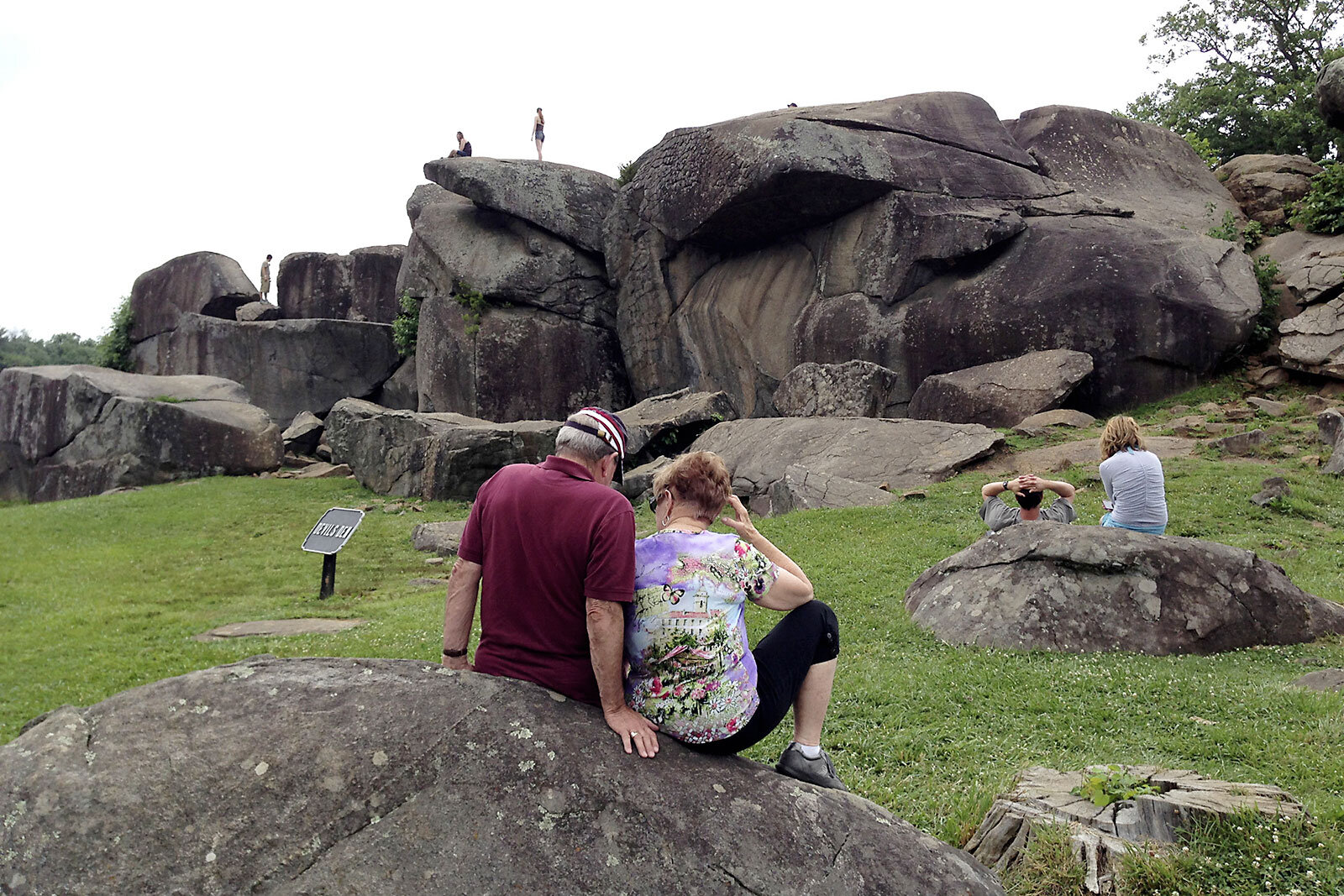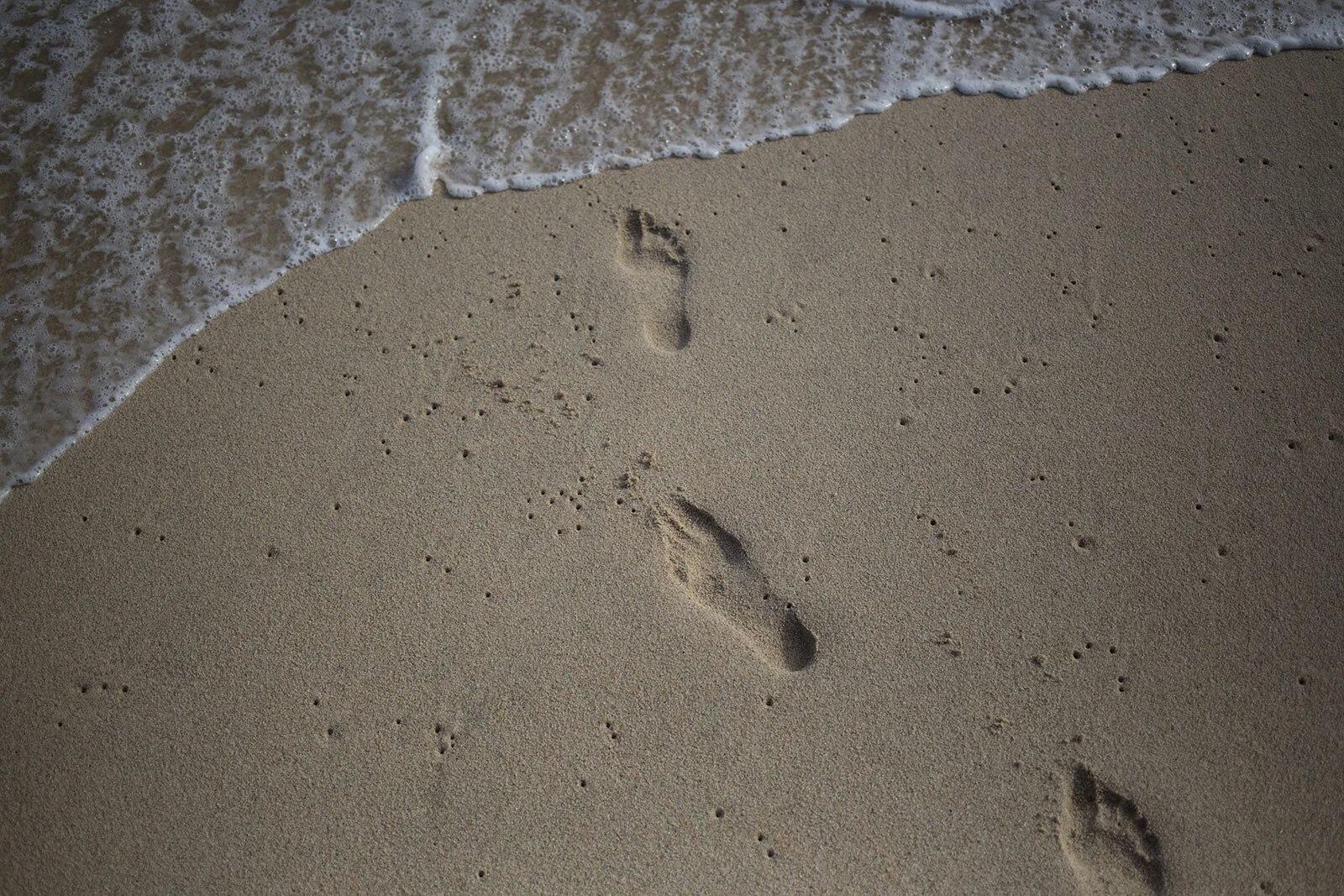Columbine for Education Week
Visitors read the raised bronze letters of the Columbine Memorial plaques in whispers, asking questions to God, survivors, the community, and each other.
The confusion still hangs in the air, blending with the sounds of current events. The headlines and sound bites ring in your ears as you run your hand along the rough red sandstone wall built into the side of a hill where students once gathered before football games, after class, and in times of joy. After the massacre, the hill became a rallying point for students and community members to find news of those murdered or injured, to look down upon the school in horror, or to display handmade memorials of sorrow.
“The hardest part to understand is kids killing kids.”
“Shortly after April 20, 1999, there was an outpouring of flowers, notes, poems, ribbons, stuffed animals, pictures and other objects brought to Clement Park to pay tribute to those that died, were injured or traumatized. From that initial outpouring of emotions and disbelief came the concept of establishing a permanent public memorial near the high school, a memorial that would serve to honor those innocent victims but also provide a historic record of this tragedy and to deliver a message of hope many generations to come.”
Frank DeAngelis, Columbine High School's principal from 1996-2014, visits the Columbine Memorial in Littleton, Colo., earlier this week. April 15, 2019.
I was recently assigned by Education Week to visit the Columbine Memorial to make portraits of Frank DeAngelis, who was Columbine High School’s principal during the 1999 shooting. His commentary, published this week, addresses the complex emotions that go along with not only being in a leadership position during the shooting but long after the physical destruction.
“Frank DeAngelis was 43 and in his third year leading Columbine High School when normal life ended forever with what was then the deadliest school shooting in the nation's history. DeAngelis drew on his Catholic faith, his family and friends, and therapy to return to the school, determined to keep alive the memory of "the beloved 13" who were killed that day and rebuild the spirit of the school.
The toll on him included his first marriage and, for a while, his health. After the shootings, he poured even more hours than before into increasing feelings of connection, attending as many school events as possible and reaching out to disaffected students.”
DeAngelis’ phone is constantly ringing or buzzing with messages, especially as the state and world read and watch anniversary articles stream across their feeds. It’s obviously not the path he intended his life to travel. Along that path, he carries the baggage of guilt and sorrow.
To this day, on every April 20, DeAngelis calls each family who lost a loved one and each former student who was injured in the shooting. He spends his time speaking to educators and to groups across the county who intersect with schools around safety concerns. And he continues to reach out to survivors of school shootings, especially principals and students, telling them that they need to find their support system for the long haul, as he did.
“I've had a lot of survivor's guilt,” he says.
“Cassie Bernall, 17
Steven Curnow, 14
Corey DePooter, 17
Kelly Fleming, 16
Matthew Kechter, 16
Daniel Mauser, 15
Daniel Rohrbough, 15
William “Dave” Sanders, 47
Rachel Scott, 17
Isaiah Shoels, 18
John Tomlin, 16
Lauren Townsend, 18
Kyle Velasquez, 16”
“We remember every parent who battled depression and grief, anger and sorrow; who battled the relentless task of waking up knowing their child would not come home. We remember every parent, every friend who spent countless hours in dozens of hospital rooms and beside vigils, in the slow and painful process of recovery. We remember our pain, we remember our sorrow; we remember our heroes. We remember those who in selfless acts of courage, who in sacrificial dedication risked all in time of crises and need.””


